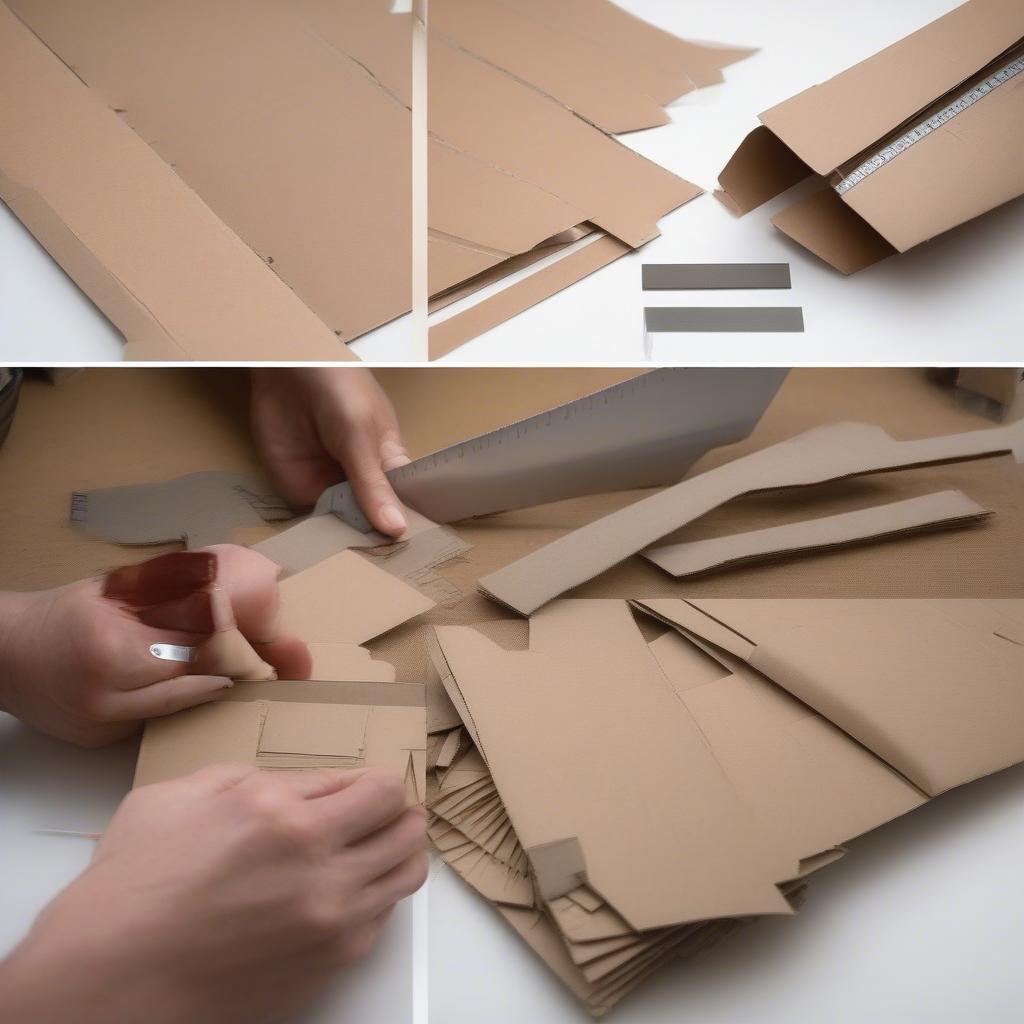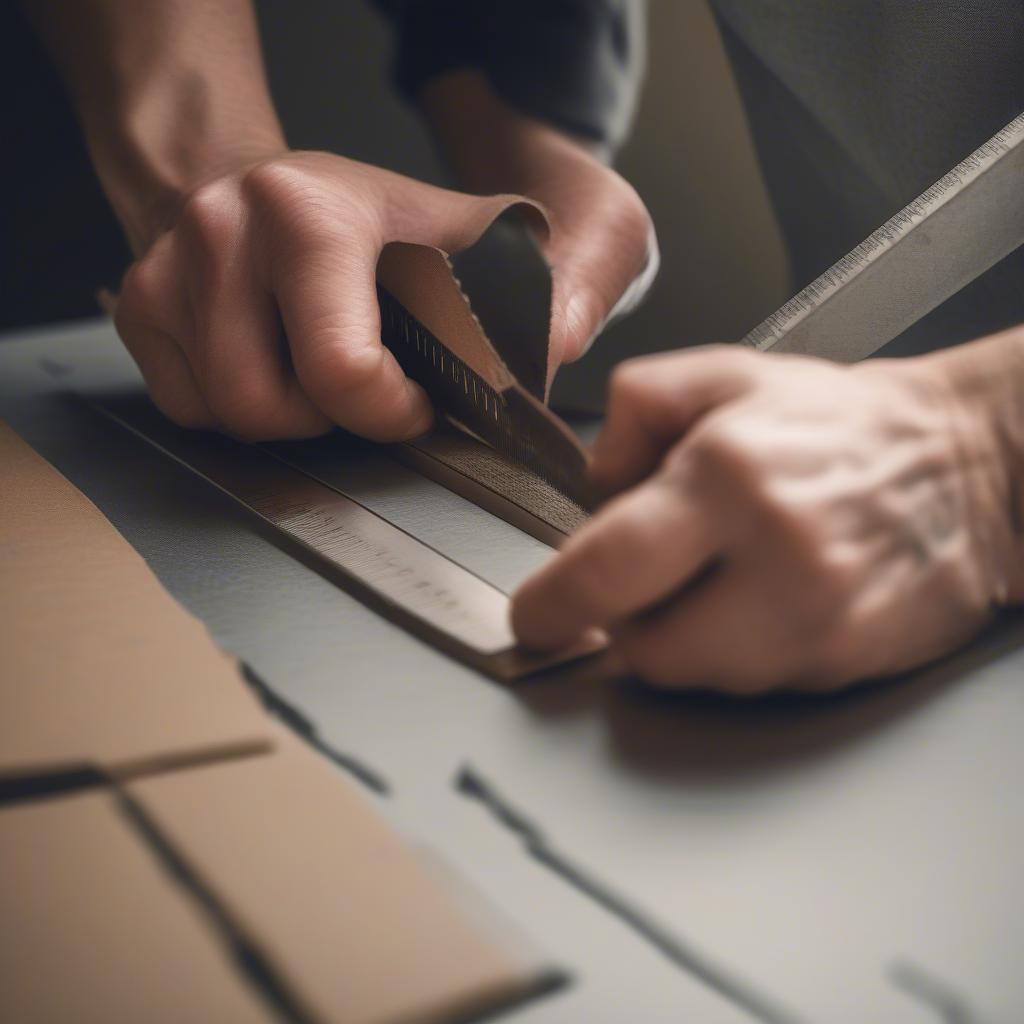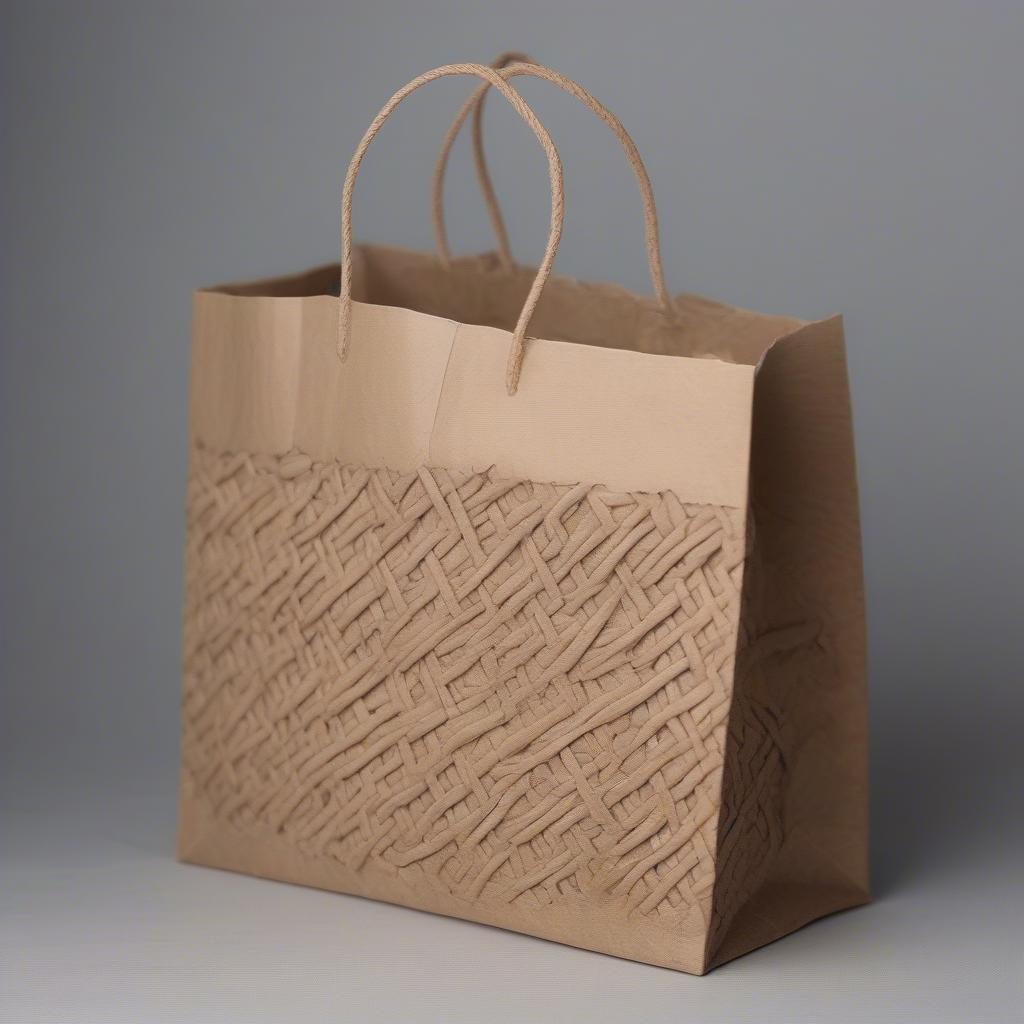Basket Weaving
How to Do a Cardboard Bag Weave
Learning How To Do A Cardboard Bag Weave transforms ordinary discarded cardboard into beautiful, functional art. This guide provides a comprehensive approach to cardboard bag weaving, from preparing your materials to mastering fundamental weaving techniques.  Preparing Cardboard for Weaving
Preparing Cardboard for Weaving
Gathering Your Cardboard Weaving Supplies
Before you begin your cardboard weaving journey, gather the necessary supplies. You’ll need cardboard, of course, but also a few other essential tools to make the process smoother. how to weave a bag from plastic bags offers some interesting parallels in material preparation, even though the materials themselves are different.
- Cardboard: Flattened cardboard boxes, cereal boxes, and even shipping tubes can be used. The thicker the cardboard, the sturdier your finished product will be.
- Cutting Tools: A sharp utility knife or scissors are essential for creating clean, even strips of cardboard.
- Ruler or Straight Edge: This will help you cut consistent strips, which are crucial for a neat weave.
- Pencil or Marker: Use this to mark your cutting lines on the cardboard.
- Optional: Paint, Stain, or Varnish: These can be used to decorate your finished woven piece.
Preparing the Cardboard Strips for Weaving
The key to a successful cardboard bag weave lies in the preparation of the cardboard strips. These strips, or “weavers,” form the foundation of your project. Aim for consistent width and length for a more professional look.
- Flatten the Cardboard: Make sure your cardboard is completely flat to ensure easy cutting.
- Measure and Mark: Use your ruler and pencil to mark the cardboard where you will cut your strips. The width of your strips will depend on the desired look of your finished project. Thinner strips create a finer weave, while wider strips create a bolder look.
- Cut the Strips: Carefully cut along the marked lines using your utility knife or scissors. Try to keep the strips as straight as possible.
 Cutting Cardboard Strips for Weaving
Cutting Cardboard Strips for Weaving
Basic Cardboard Bag Weaving Techniques
There are several weaving techniques you can use with cardboard, from simple over-under patterns to more complex designs. weaving plastic bags for kids provides a great introduction to basic weaving concepts.
- Over-Under Weave: This is the most basic weave, where you simply weave one strip over and then under the next.
- Basket Weave: This involves weaving groups of strips over and under each other, creating a checkered pattern.
- Twining Weave: This technique uses two or more weavers twisted around each other to create a strong, decorative edge.
Creating Your Cardboard Bag
Now that you have your strips prepared and understand the basic techniques, you can start creating your cardboard bag.
- Create a Base: Start by creating a square or rectangular base by weaving your cardboard strips together.
- Build Up the Sides: Once you have your base, begin weaving the sides upwards, using one of the weaving techniques mentioned earlier.
- Add Handles (Optional): If you want your bag to have handles, you can weave separate strips and attach them to the top of the bag. dennis white yarn bag weaving shows innovative handle techniques, although with a different material.
- Finishing Touches: Once your bag is complete, you can add decorative touches such as paint, stain, or varnish.
Cardboard Bag Weaving: Tips and Tricks
- Soaking the Strips: Soaking the cardboard strips in water for a short time can make them more pliable and easier to work with.
- Using a Template: If you’re creating a specific shape, using a template can help ensure accuracy.
- Experiment with Colors and Textures: Don’t be afraid to experiment with different colors and textures of cardboard to create unique designs. how to weave a tapestry bag on a box demonstrates how weaving on a form can help achieve complex shapes.
“Cardboard weaving is a fantastic way to recycle and create something beautiful and functional,” says renowned crafting expert Amelia Cartwright. “The possibilities are endless, limited only by your imagination.”
 Finished Cardboard Bag Weave
Finished Cardboard Bag Weave
“The beauty of cardboard weaving lies in its simplicity and accessibility,” adds Michael Davies, a leading figure in the sustainable crafts movement. “Anyone can do it with readily available materials.”
Conclusion
Learning how to do a cardboard bag weave offers a rewarding experience, allowing you to transform discarded materials into functional art. This sustainable craft is not only enjoyable but also contributes to reducing waste. So, gather your materials and embark on your cardboard weaving adventure! weave a waste basket is another great project to explore once you’ve mastered the basics.
FAQ
- What type of cardboard is best for weaving?
- How do I make sure my cardboard strips are the same width?
- What can I do if my cardboard strips are tearing?
- What are some different weaving patterns I can try?
- How can I make my finished cardboard weave more durable?
- Can I use glue to reinforce my weave?
- Where can I find more inspiration for cardboard weaving projects?
If you need further assistance, please contact us at Hanoi, Vietnam or Tech Avenue, Suite 12, San Francisco, CA 94105, USA. We have a 24/7 customer support team.
